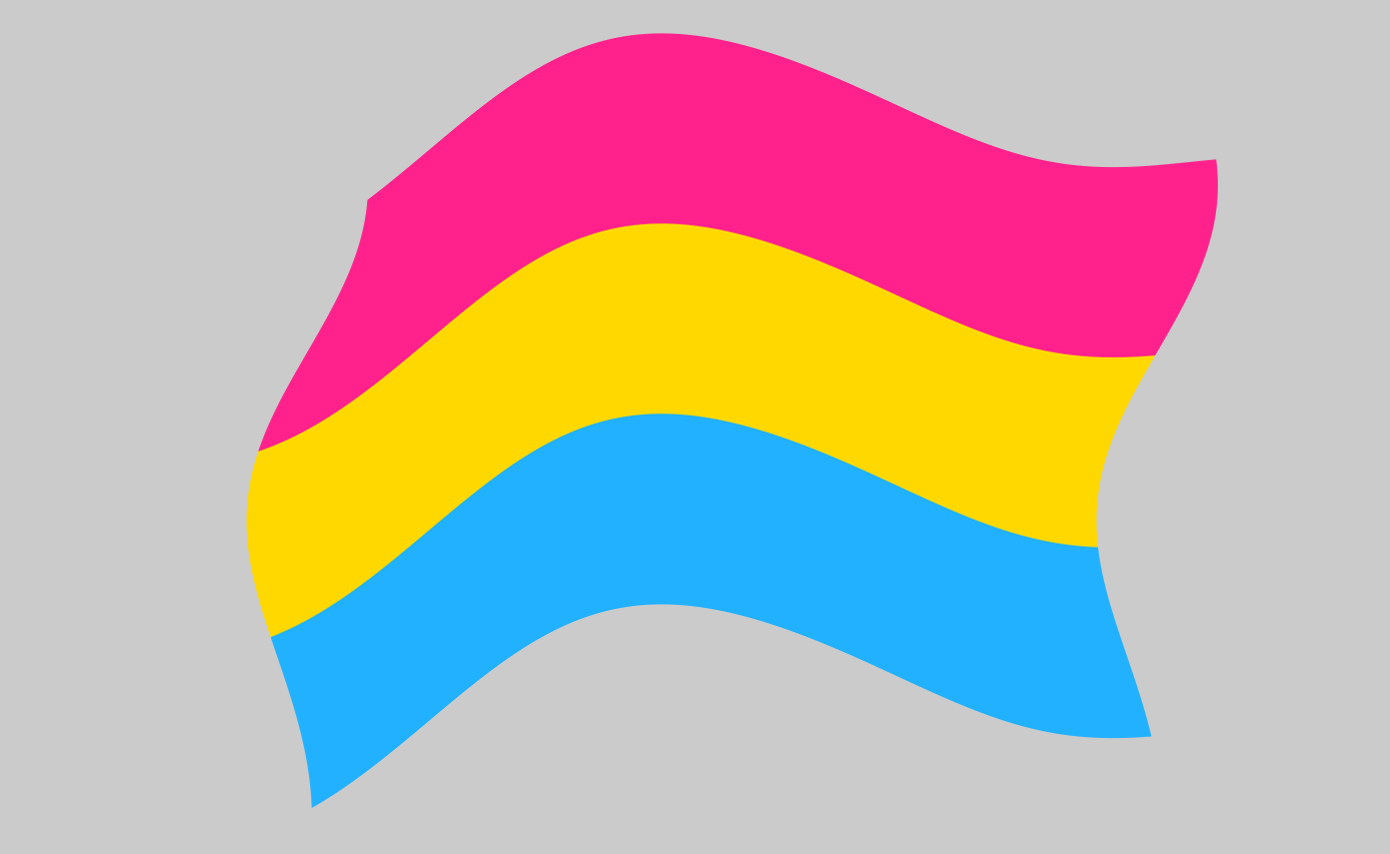
Each year on 23 September we mark Bi Visibility Day, a day to celebrate and uplift the ‘B’ in LGBTQ+ who have been fighting for queer liberation from day one. It’s also a reminder to tackle the harmful myths and stereotypes that continue to permeate bisexual people and often result in them feeling ostracised from society and the wider LGBTQ+ community. One challenge bisexual people may face is, ‘What is the difference between bisexual and pansexual?’ While both identities often fall under the bisexual umbrella, it’s important to not confuse them with one another. Here, we break down the meaning of both bisexuality and pansexuality, the origins of their Pride flags and why they’re both valid in their own right.

What does bisexual mean?
According to its Merriam-Webster entry, the first known use of the word “bisexual” was in 1798. At the time, it was defined as “possessing characters of both sexes.” Over the centuries, however, the term has widely evolved and it doesn’t necessarily mean a bisexual individual is attracted to just two genders.
Now, it’s usually defined as the sexual/romantic attraction to more than one gender – and it’s not just exclusive to those who sit within the male and female gender binaries. Some may also assume that the ‘bi’ in bisexual, which means two, means that bisexual people aren’t attracted to non-binary people. This is not the case.
Yes, some bisexual people might only be attracted to males and females, while others might be attracted to multiple gender identities – but not all of them. For example, the Merriam-Webster says bisexuality is “characterized by sexual or romantic attraction to people of one’s own gender identity and of other gender identities.”
To this day, bisexuality can mean different things to different people, and one bisexual person may define their sexuality differently to another bisexual person.
Charlie Middleton, an ambassador for LGBTQ+ youth charity Just Like Us, says of his sexuality: “To me bisexuality means being attracted to more than one gender, it is more of a broader term and includes all genders. I prefer to use the word bisexual to describe my sexuality as this term is more common and easier to define.
“The one thing I love about being bisexual is that there is no one way to be bisexual, there is so much flexibility and diversity!”
Sophie Cundall, also from Just Like Us, says: “For me, bisexuality means that I am attracted to people of any gender. There’s a common misconception that the ‘bi’ in bisexual means that you only are attracted to two genders, but that’s not the case at all, at least for me.
“Bisexuality is not limited at all and is a very fluid, all-encompassing and inclusive sexuality!”
What does the Bisexual Pride Flag mean?
LGBTQ+ activist Michael Page designed the bisexual flag in 1998 to give bisexual people their own symbol and to increase visibility of the community – within society and the LGBTQ+ community at large.
The flag consists of three colours: magenta, which represents same-sex attraction; blue, which represents attraction to different gender; and lavender, a mixture of magenta and blue which represents attraction across the gender spectrum.
The foundation was inspired by the biangles, designed by Liz Nania, for the Boston Bi Woman’s Community. The pink was used by Nazi’s during World War II as a symbol for gay men, while lesbians – and other “asocials” such as sex workers and “nonconformists” – were marked with a black triangle.
“In designing the Bi Pride Flag, I selected the colors and overlap pattern of the ‘bi angles’ symbol,” said Page.
“The key to understanding the symbolism of the Bisexual pride flag is to know that the purple pixels of color blend unnoticeably into both the pink and blue, just as in the ‘real world,’ where bi people blend unnoticeably into both the gay/lesbian and straight communities.”

What does pansexual mean?
Pansexuality is defined as the sexual/romantic attraction to all genders – the prefix “pan-” means “all.”
It can also be defined as being attracted to an individual regardless of their gender, which is also called “gender-blind”. Many pansexual people are only attracted to people based on their personality, meaning they can be attracted to people who are male, female, non-binary or any other gender.
It is important to note that because pansexual people are not limited in sexual choice, it doesn’t mean they are attracted to everyone. For example, a heterosexual male isn’t attracted to every single female he meets, and vice versa. A gay male isn’t attracted to every male he meets. A lesbian isn’t attracted to every woman she meets, etc. You get the gist.
Kara Allum, Just Like Us ambassador, says they found “freedom” in the word pansexual.
“The first definition I ever heard for it was “attraction regardless of gender” and that really resonated with me. As someone whose own gender identity feels like it can be so many things and nothing all at once, I find it hard sometimes to know how to label my connection to other people,” they said.
“So, finding the word pansexual just felt like it took the pressure off. I feel that personally it also reflects my own connection to demisexuality more than the word bisexual does. Like with all labels, there’s a power you gain from finding the right one for you and I think I’ve found that with being pansexual.”
What does the Pansexual Pride Flag mean?
Similarly to the Bisexual Pride Flag, the Pansexual Pride Flag consists of three stripes to symbolise pansexuality as an attraction to a person regardless of gender – or an attraction to all genders.
Blue represents an attraction to men, pink to women, and yellow to people who don’t fit within the gender binary.
The Pansexual Pride Flag first gained traction when it circulated online in 2010, and was created by an artist called Jasper. Check out their Twitter thread, in which they explain the origins of the flag, here.
What is the difference between bisexuality and pansexuality?
Pansexual is a term that falls under the bisexual umbrella. They’re often confused with one another as both labels mean sexual attraction to more than one gender. Both sexualities are valid in their own right.
However, pansexual people are not limited in their sexual choice and can be attracted to everyone, regardless of gender, whereas bisexual people may only find themselves attracted to women and non-binary people, or men and non-binary people, men and women and so forth, but not all of them.
Middleton adds: “In my opinion pansexuality fits underneath the bisexuality umbrella but differs slightly. Pansexuality is more an emotional attraction to a person regardless of gender, but I do feel both terms can be closely interlinked.”



